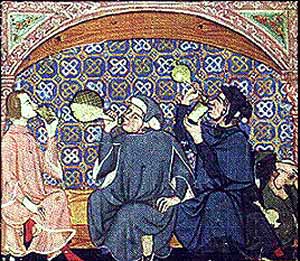Her daughter, Samantha Norman, took on the task turn Franklin's drafts into a finished novel.
Not a part of Franklin's Mistress series, The Siege Winter takes place during the terrible time known in English history as "Christ and his saints slept":
 |
| Empress Matilda |
The novel has two plots that converge, then diverge, neither of which have that much to do with each other, partially due to the differences in rank of the characters, and partially due to uncertainty of plotting. There is also an uncertainty as to just what sort of book Siege Winter is intended to be: medieval mystery like those that make up the Mistress of Death novels? [check the Cadfael mysteries] straight-up historical novel? medieval] romance?
One converging plot stream concerns a monk-serial rapist-torturer-killer of young girls with red hair, and the other is of a young girl who comes to power as the chatelaine of an out-of-the way small castle.
The novel is filled with anachronistic usage, such as – opening a paragraph describing scorn for something-or-other, with a single word, “Hello?” That contemporary adolescent sneer-tone is particularly jarring because we are in the midst of extended scene in which a young girl (one of our several protagonists) is run down, horrifically tortured, gang raped, and left for dead.
There's a lot of that in this book, meaning the grisly, inappropriate tone and anachronism.
Among such is in the other plot, which has Kenniford castle always serving brandy . . . in 1141. Well, this is barely possible, as the distillation process long pre-dates the “Burned Wine” / brandewijn, which was introduced and spread widely across northern Europe by the Dutch in the 16th century, who learned of it in Spain. In the 8th century, Irish monks learned of it in Spain as well, where it was introduced by the Moors; the monks brought the process back to Ireland. But still, this “brandy” is highly unlikely in a mid-12th century domain that is a small castle belonging to a family of middling sort of rank.
Recommendation: read Sharon Kay Penman's When Christ and His Saints Slept (1995) instead.




No comments:
Post a Comment